Gear Ratio - What gear ratio is most suitable for me, my bike and my routes?
"What gear ratio do I like best?" This is a question that many cyclists ask themselves. Unfortunately, there is no simple answer. Maybe you prefer a relaxed ride through the flat polders of the Netherlands? Or do you want to take on the challenge of the dreaded Mont Ventoux? These two different rides naturally require a different level of physical effort and suitable gearing. In this blog you will read what the gear ratio of a road bike actually is and which components define the gear ratio on your bike. Furthermore, we will explain which gear is generally the most suitable in different situations.
What are Road Bike Gears?
Simply put, the gear ratio on a road bike affects the distance covered with one rotation of the cranks. The proportion between the front (chainring) and the rear sprockets (cassette) is called the ratio. Regardless of where and how you cycle, the right gear ratio is important. The larger the front chainring, the more torque you can generate, resulting in a high top speed. Conversely, the smaller the rear sprocket, the more torque you can generate, resulting in a high top speed.
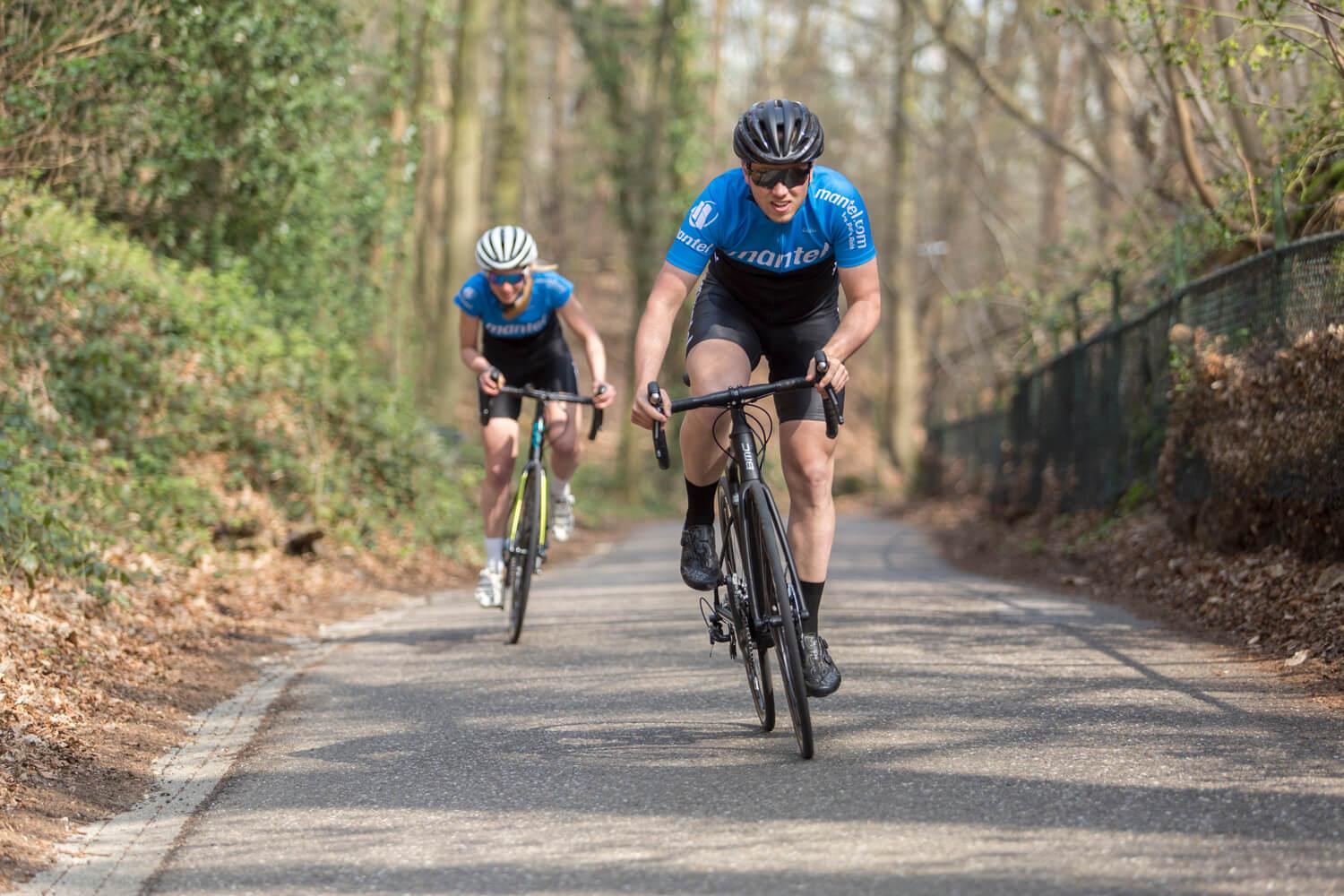
The Gear Ratio Table
The Gear Ratio Table shows the distances (in metres) that can be covered with one rotation using different sprocket combinations on a road bike with 28″ wheels. The column on the left shows the number of teeth on your rear sprocket and the top row shows the number of teeth on your front chainring. For example, a ratio of 39 by 25 equals to a distance of 3.27 metres after one pedal stroke. A ratio of 40 by 14 equals a distance of 5.99 metres.
You can see that the number of teeth on the front chainring and rear sprockets affects the distance covered. The table shows numerous combinations, illustrating that there are many different gears to choose from. What gears you have on your bike depends on the type of crankset and cassette that are fitted to your bike.
Different Types of Cranksets
The crankset is among the most important bike parts. It features the front chainrings and crank arms. The crankset can have 1, 2 or 3 chainrings.
The chainring of a single crankset can have between 50 and 38 teeth. This type of crankset is not often used on road bikes, but offers an advantage when riding on an off-road bike such as a mountain bike, gravel bike or cyclocross bike. A crankset with two chainrings may feature a 50/34-teeth setup and a triple crankset may have 50/39/30 teeth chainrings, for example. What crankset you should choose depends on the type of ride you are going to do and how well trained you are.

Crankset with two chainrings
We recommend opting for a 2-chainrings drivetrain, because this type of crankset generally offers the most advantages. Cranksets with two chainrings are lighter than cranksets with three chainrings, because there are simply fewer parts. They are also less wide, so you can go tighter through the corners.
Additionally, two chainrings shift noticeably better than a crankset with three chainrings. The range of possible ratios in modern two-chainring cranksets is so large that there is a suitable crankset-cassette combination for almost all cyclists.
Within this category, you can choose between a Compact crankset (50/34), a Semi-Compact crankset (52/36) and a Double crankset (53/39). In the following section, the advantages and disadvantages of these different types of cranksets are listed.
Pros and Cons of Compact Cranksets (50/34)
- This is a ratio that can be used by a large group of cyclists on flat tracks as well as in the mountains.
- The light gears allow you to climb more efficiently.
- Small jumps between gears.
- When cycling at around 30km/h, the chain often lies in a diagonal line on the outer chainring, which causes the chain to wear faster.
- Because the gears are quite low, it is harder to accelerate downhill with a comfortable cadance.
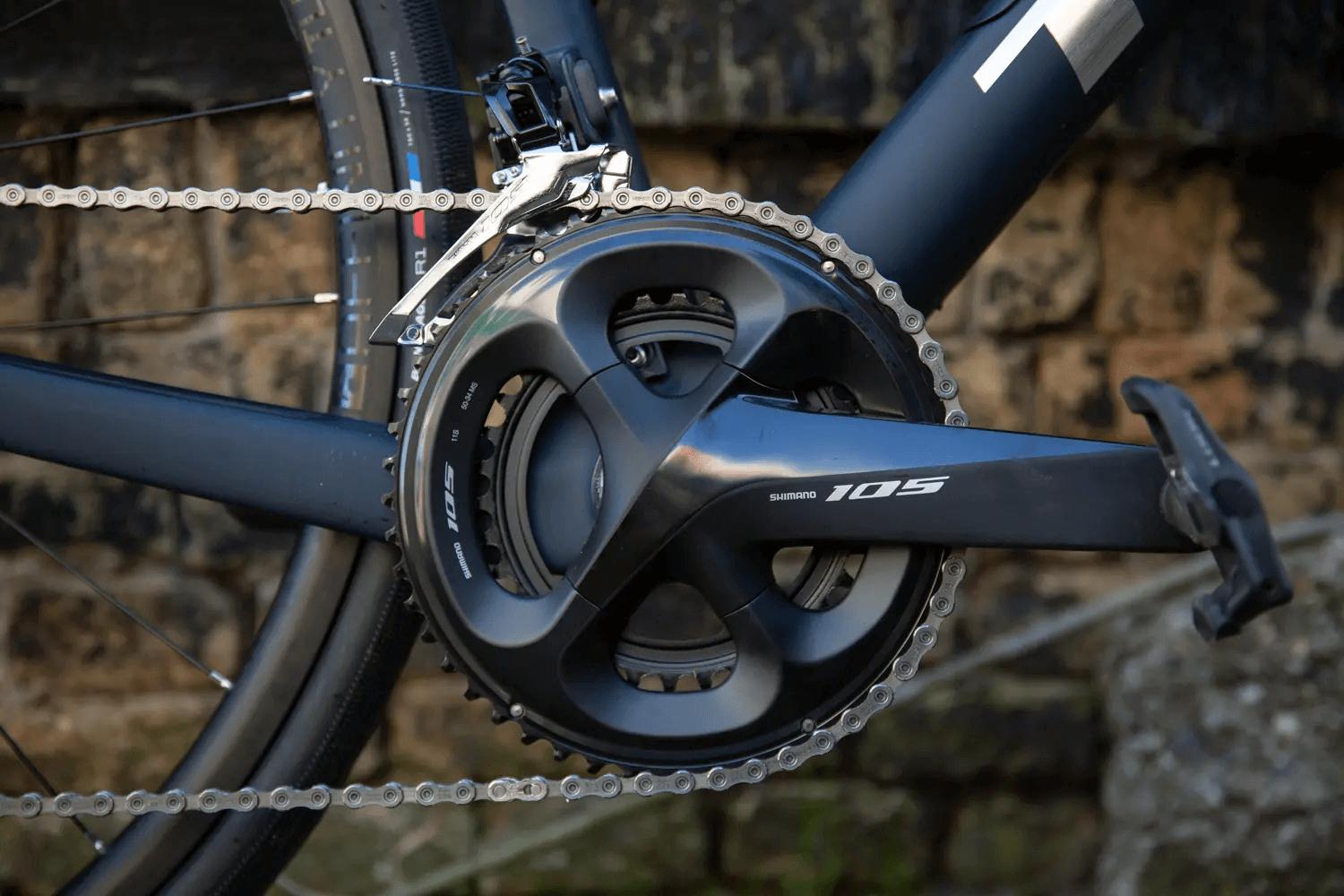
Pros and Cons of Semi-Compact Cranksets (52/36)
- Wide range that can be used both in the mountains and on the flat by well-trained cyclists.
- In fast group rides or descents you can accelerate without spinning out.
- In combination with a larger cassette, you can shift to a gear almost as low as with a 50/34.
- Bigger jumps between gears.
- When you are cycling at around 30 km/h, you may find yourself shifting a lot between the inner and outer chainring in order to maintain the right cadence.
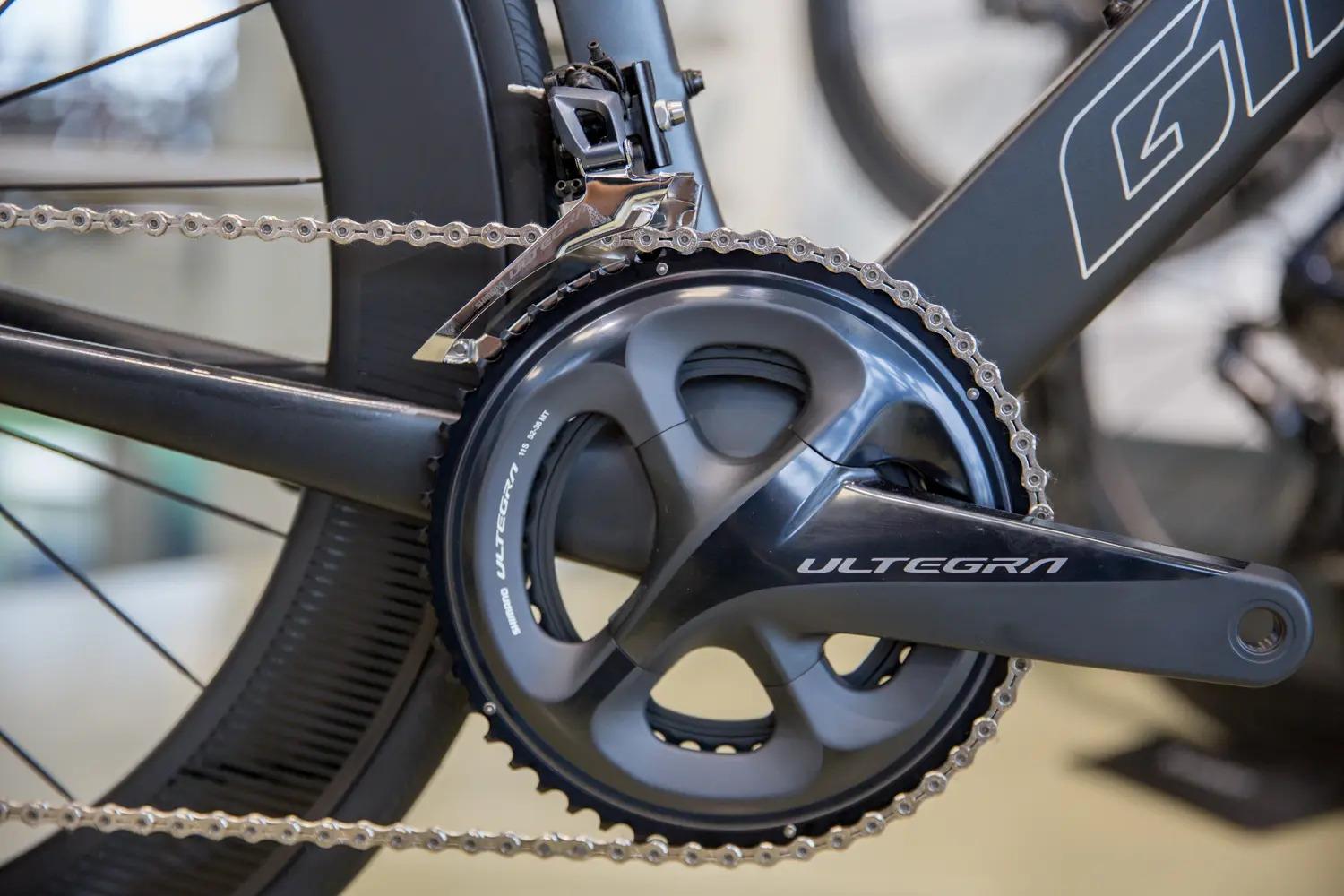
Pros and Cons of Double Cranksets (53/39)
- In fast group rides or descents you always have the option to accelerate to an even higher speed.
- Small jumps between gears.
- At around 30 km/h the chain is still on the inner ring, which means that you do not have to change gears with the front derailleur.
- For many cyclists, this ratio is too heavy in the mountains.
- The heaviest gears are only used in descents, races or fast group rides. For many cyclists, these heavy gears are basically useless.
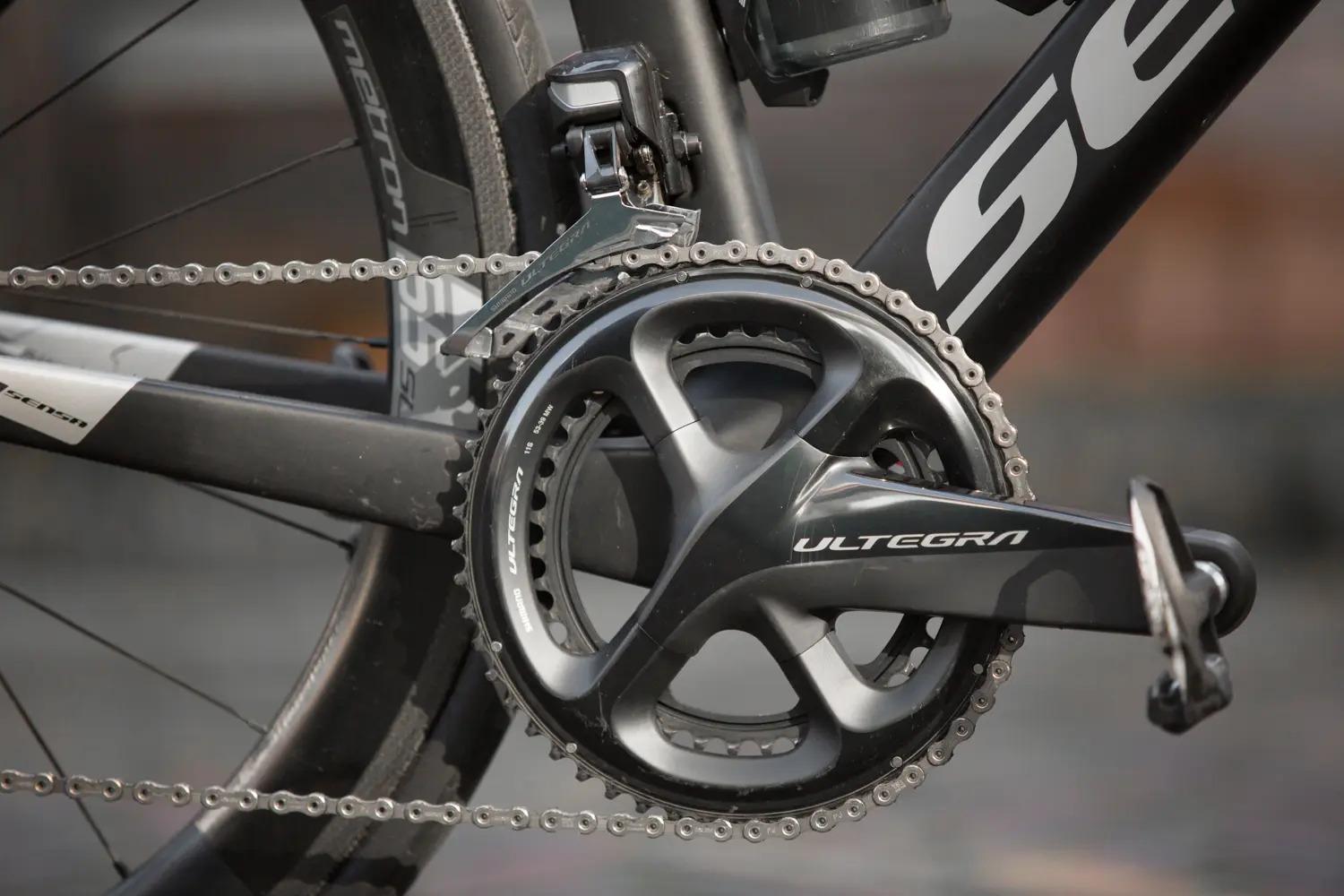
Different Types of Cassettes
There are different cassette ratios. There are 11/25 and 12/25 for flat riding, while 11/28 or 11/30 cassettes are suitable for hilly courses and for some riders, suffice in the mountains. For most cyclists, however, the 11/32 and 11/34 cassettes are best suited for steep climbs.
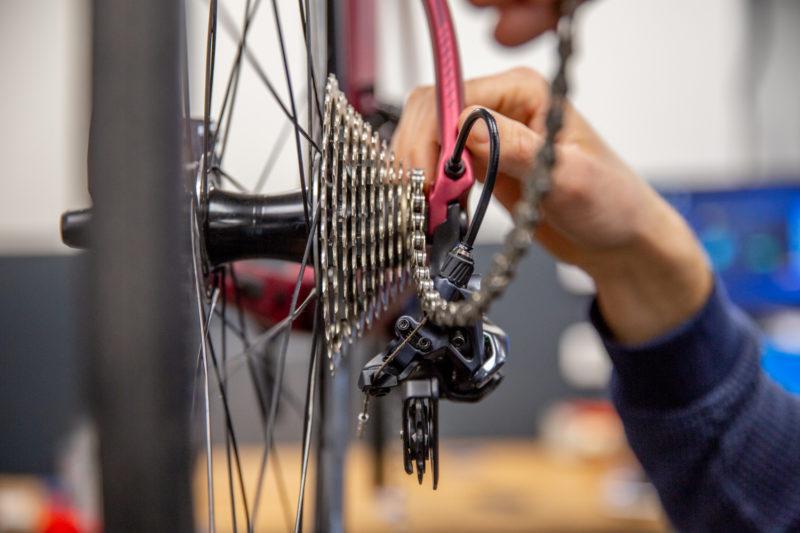
As with cranksets, when choosing the right cassette it is very important to keep in mind the kind of riding you are going to do.
How to choose the right ratio?
As we mentioned above, there are a ton of options when it comes to the different types of cranksets and cassettes to find the right gear ratio for your bike.
If all these different numbers have still not turned you off, you should take a look at the gear calculator website.
Here you can enter your preferences for different types of cranksets and cassettes in order to sketch out different situations. This way you can calculate which gear is more efficient for you in the high mountains or in the hills of Limburg.
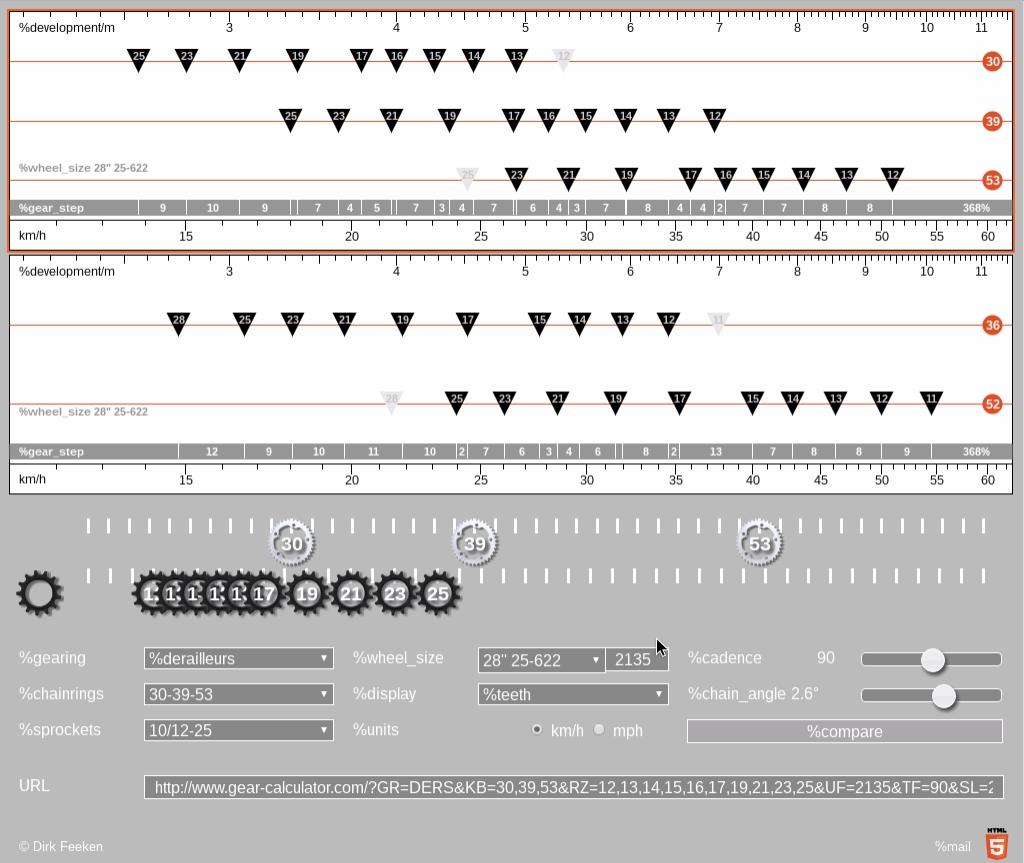
Different preferences for everyone
Of course, it is difficult to choose the right gear ratio for everyone in different areas. Nevertheless, our specialists have drawn a distinction between certain environments and the ratios that best suits them.
What gear ratio is right for you depends on the type of rider you are. Someone who loves climbing will probably choose a different gear than a rider who mainly rides on the flat.
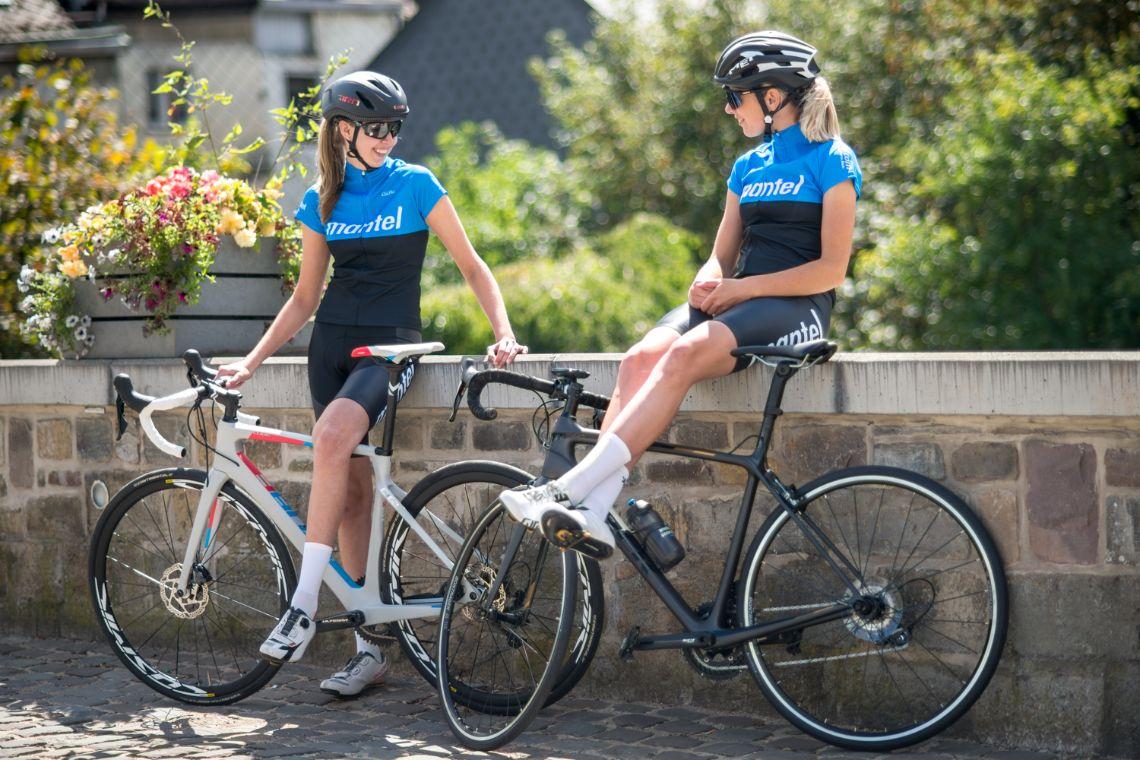
It is important to remember that the preference for a particular gear can vary from person to person, but we can offer you a certain guideline here.
A ride through the Dutch polders
In the Netherlands, we are quite used to the flats. It is not uncommon for riders to equip their bike with a 53/39 double crankset and pair it with an 11/25 cassette on the back.
A double crankset is best suited for the cyclist who stays within the Dutch borders (or abroad environments that are equally flat) and does little to no climbing.
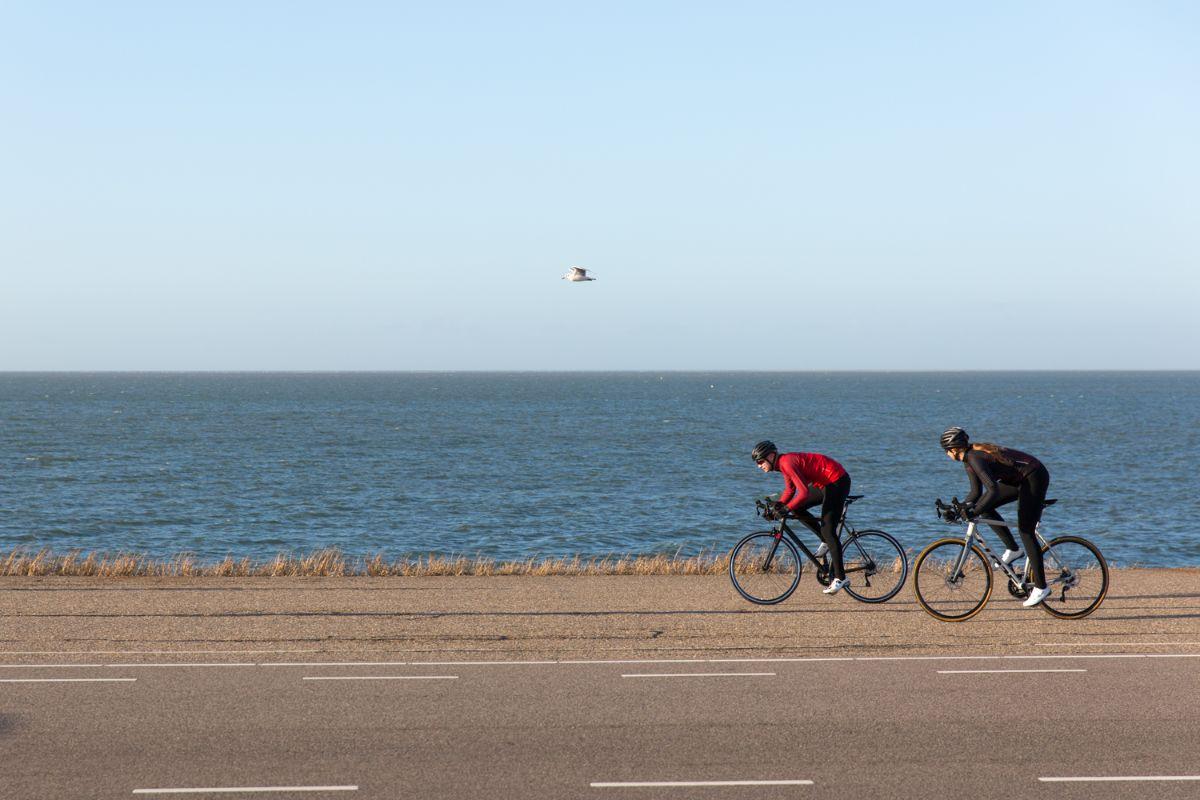
This crankset-cassette combination offers the possibility of running a high gear in order to cycle as fast as possible. For the flat, it is not necessary to have low gears.
A little climb every now and then
Cyclists who get bored with endless dikes can choose to switch to an 11/28 cassette and a 52/36 crankset. This gives you the option to go cycling in a slightly more hilly area.
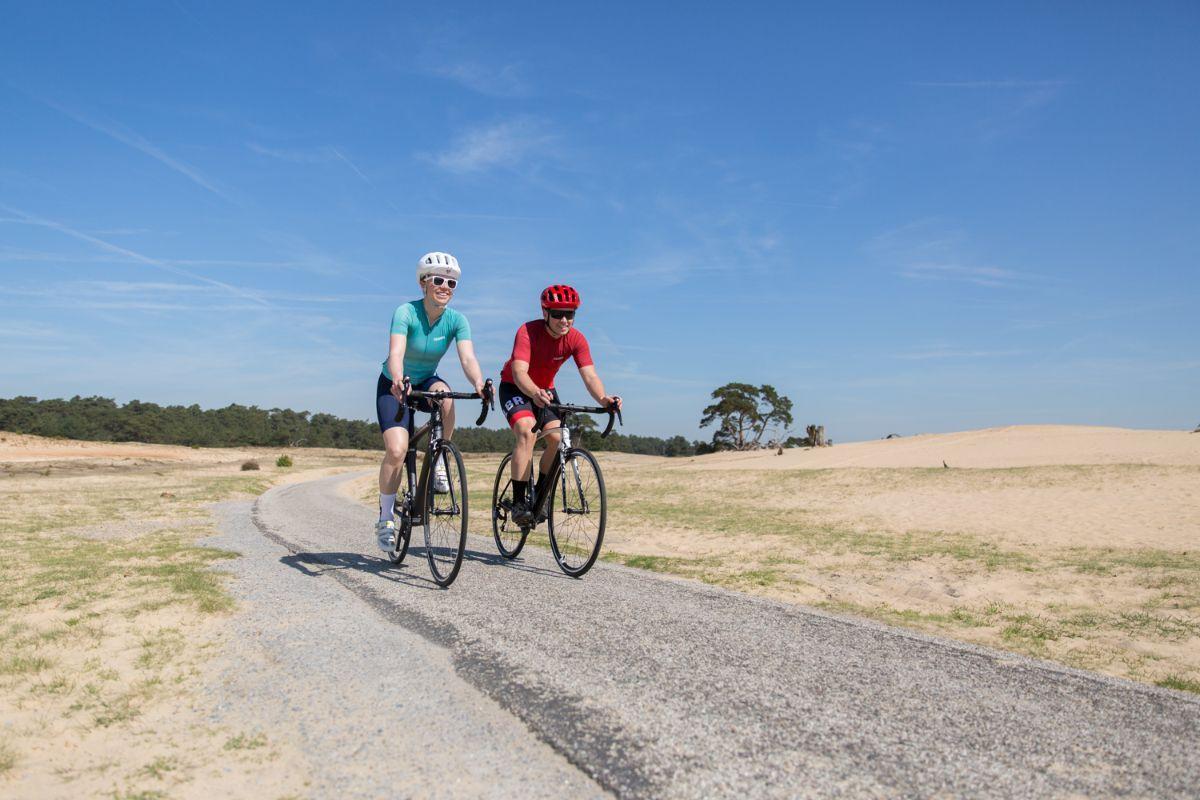
With this ratio, it is possible to reach high speeds on the flat, but also shift to lower gears on some of the climbs.
A step higher
If you have acquired a taste for climbing and are looking for a bit more of a challenge, you can take on the local hills or travel a bit to find some real mountains.
If you want to ride in these areas we recommend you to stick to the same 52/36 crankset. For extra options and comfort uphill, we recommend fitting an 11/30 cassette.
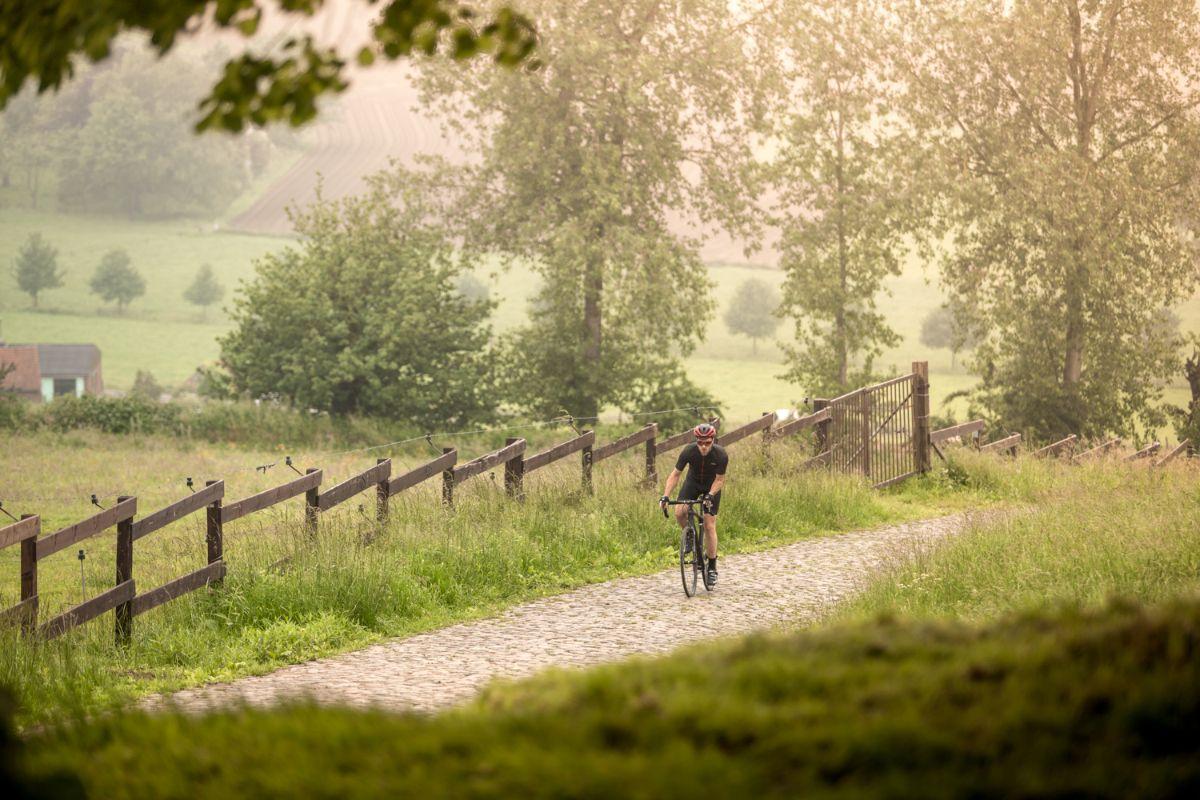
This is, of course, not at all necessary if your legs are up to the challenging mountains with the same cassette you use at home. It is and will remain different for each person what gear ratio is best.
The real thing
The slightly more experienced cyclist can choose to travel a little further than the local hills during their cycling holiday. If you are not yet ready to conquer the highest mountains, the Vosges Mountains are a good intermediate step.
To avoid difficulties in this area, it is advisable to equip your bike with an 11/32 cassette and a 50/34 crankset.
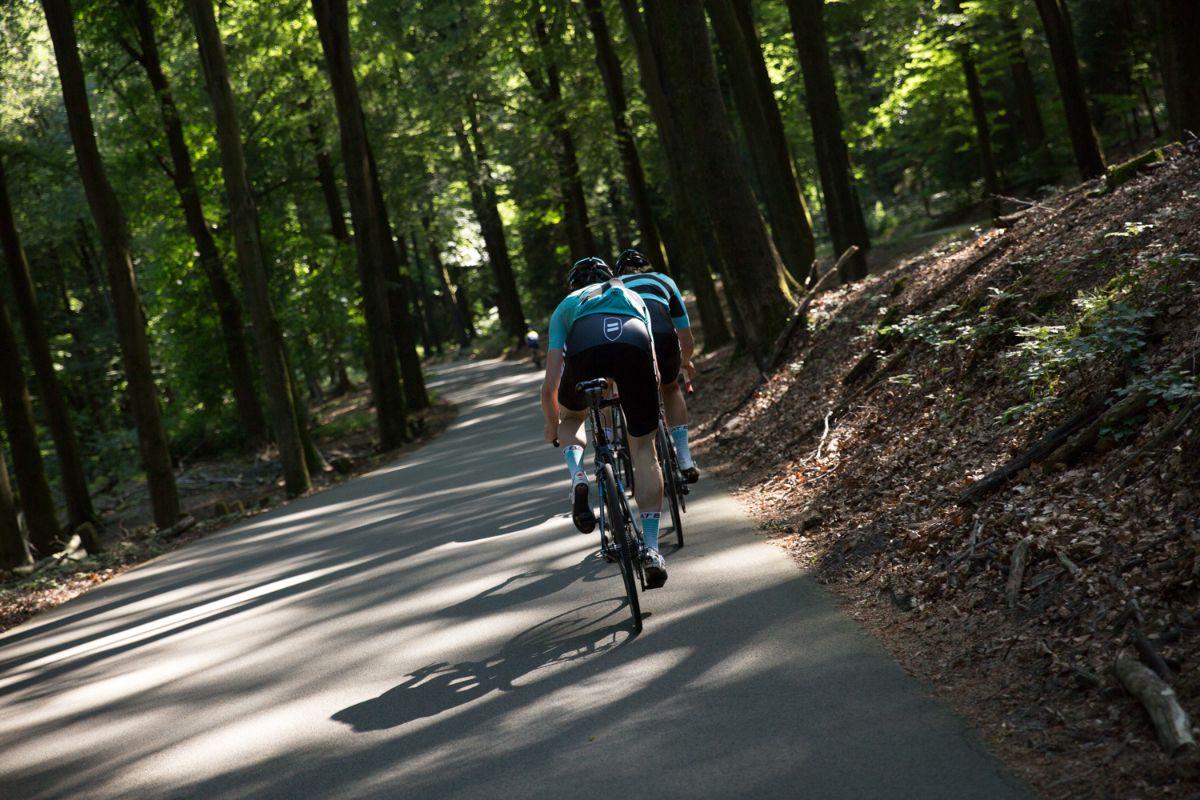
With this combination you can shift into a very low gear when necessary. That way, you don't have to take a walk.
Onto the high mountains
If the climbs in the Ardennes and the Vosges are not challenging enough, there is no other way than to look for the bigger mountain ranges. Think of the Mont Ventoux or the Alpe d'Huez.
After you have worked up the courage to defy one of these mystical mountains, it is very important to think about the tools you are going to bring in order to achieve your goal. We recommend you to choose a 50/34 crankset with an 11/34 cassette to shift down to the lowest possible gear.
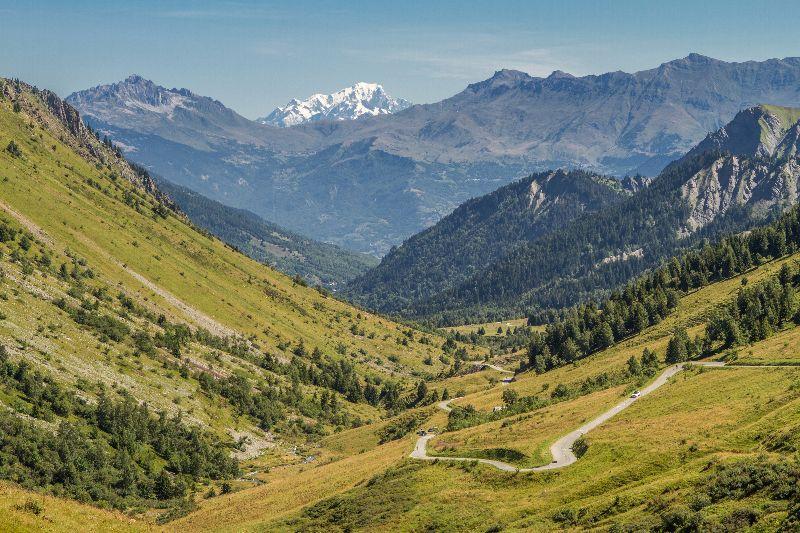
Providing yourself with the gear you need may save you from having to take a walk after just getting halfway up a climb.
In the high mountains it is also possible to use a triple crankset in order to obtain an even lower gear.
However, there are two disadvantages to this. Cranksets with three chainrings are becoming increasingly less common, and they also carry more weight. The latter can make a significant difference, especially uphill.
Replacing a Crankset or Cassette
It is increasingly common for people to get a spare crankset and cassette to replace their usual components specifically for when they go cycling in the mountains. When making this choice, it is very important to take into account the capacity of your derailleur and the length of your chain.
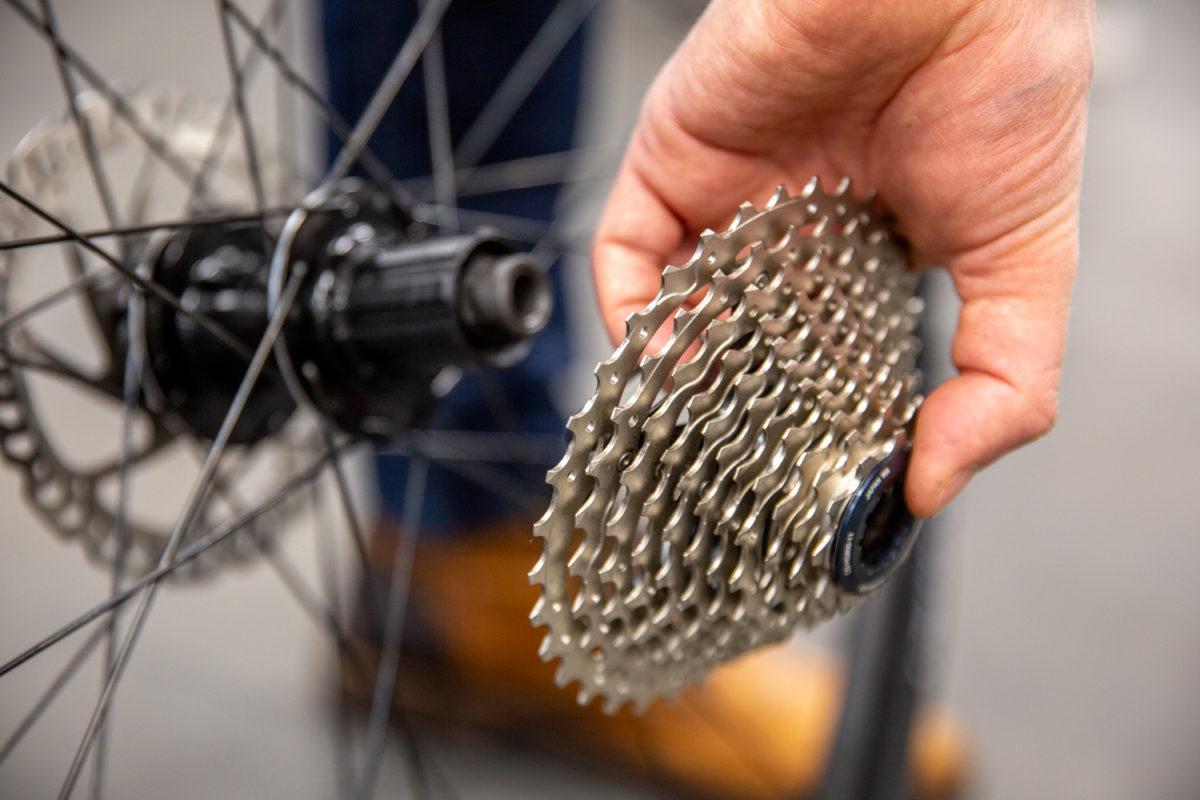
If you put a cassette or crankset on your bike that is too large, it is possible that the cage of your derailleur is not long enough to keep the chain tensioned. In addition, the chain may simply be too short. In the worst case, the rear derailleur can break off completely. So pay attention to this when fitting a different cassette. If you exceed the maximum capacity of the rear derailleur, you should replace it with a different one.
Conclusion
Replacing your cassette or crankset can be very useful when you are planning routes in a different environment than you are used to. For example, a lighter gear is recommended when cycling in mountainous areas.
It remains important to be aware that the mentioned cassette and crankset choices are suggestions based on average training levels. Depending on personal preferences and experience, you may find that something else works better for you.
Mees Janssen
I am very occupied with everything that has to do with cycling in my spare time. The fact that I get to do this during my job as well makes it all the more special. Since I live in Arnhem, I like to go cycling in my “backyard” (de Posbank) with my road bike or mountain bike. Besides cycling myself, I also love to watch professional cycling on the tv. My television is doing overtime during the summer, because I like to follow all the big cycling tours like the Giro, the Tour de France and the Vuelta. It may come as no surprise that when the Giro d´Italia crossed Arnhem in 2016, I was over the moon!
Related posts

How To Plan a Route Using Komoot? [How-To]
27 March 2023Planning and finding your own cycle routes sounds more complicated than it actually is ...

Do your own bike maintenance work! [Do It Yourself Tips]
7 February 2023Buying a new road, mountain or gravel bike is one thing. Maintaining your bike properly is another ...
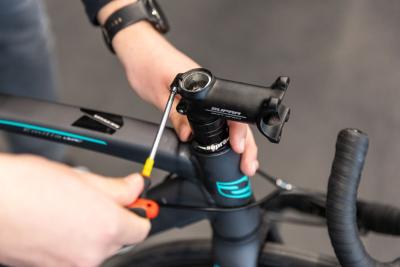
Replace the stem of your road bike in 11 steps [Bike Techcenter]
26 April 2022For road cyclists, being comfortable on your bike is of the utmost importance ...
 Nederland
Nederland België
België Deutschland
Deutschland United Kingdom
United Kingdom Finland
Finland Ireland
Ireland Luxembourg
Luxembourg Portugal
Portugal Poland
Poland Österreich
Österreich France
France España
España Italia
Italia Sverige
Sverige Danmark
Danmark









































































































































































































































